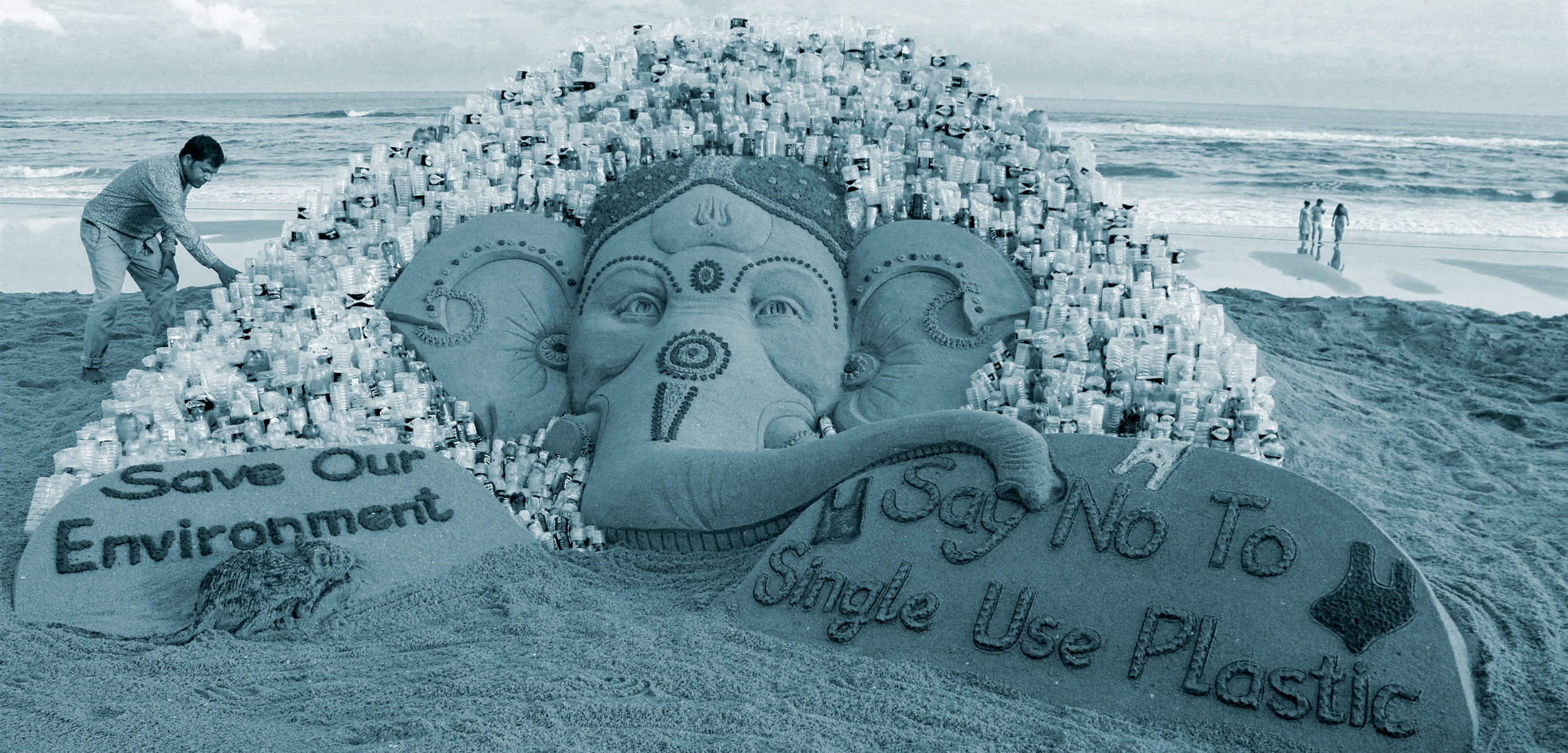Coastal Job: Sand Artist
How this professional sand artist built a career on the beach.
Article body copy
Some people work in cubicles, others work in kitchens, but the most intriguing workplace of all may be the coast. Meet the people who head to the ocean instead of the office in our Coastal Jobs series.
Sudarsan Pattnaik is an award-winning professional sand artist based in the coastal city of Puri, in the eastern Indian state of Odisha. His incredible works, like a 14-meter-high sand castle, have earned him numerous accolades and world records. Pattnaik travels internationally for competitions and exhibitions, supporting himself through his winnings and earnings.
I left school when I was 10 years old to work in a neighbor’s house in exchange for food. My family was struggling, and I didn’t want to be a financial burden to my mother who had my brothers and grandmother to care for. I always loved to draw, but since I had no money for art supplies, the sand became my canvas. I’d wake up at 4:00 a.m., head to the beach, and return before anyone missed me.
I started simple and gradually began creating more complex sculptures, like of Buddha and Shiva. I worked all day in my neighbor’s house and no one valued me; on the beach, if I returned in the evenings, people praised my work. That pushed me to develop my skills.
I stopped working at my neighbor’s house and moved out in 2006 after a Danish artist friend helped me buy my own place. I focused only on sand art after that.
My art mostly focuses on current topics and social issues—I try to pass on a message through my work. For World Environment Day one year, I combined sand art with bottles to create a giant turtle inspired by the olive ridleys that visit Odisha. The bottles highlighted the problem of plastic pollution. Huge crowds gather when I’m working, and people take and share pictures of the sculptures—I’d like them to take away something meaningful.
There are many challenges and techniques involved in working with sand, most of which I learned on the job. You have to be careful about what kind of sand you use—rough or fine—how much water to add, how to carve it without it crumbling, how to build a sculpture to withstand strong winds. People won’t be interested in a simple pyramid, but if you make an intact one with a hole in the middle, they will wonder how you did it.
The sea is part of the canvas. I think about where on the beach I should create the sculpture, where people will see it from, how the light falls. I often put artworks close to the water, where they wash away. I don’t worry about them not lasting. I don’t know what’s going to happen in my life in the next second, so if I focus on each sculpture’s longevity, I won’t be able to think about future designs.
For pieces that I want to exhibit longer, like the 1,000 Santa Clauses I made for Christmas in 2016, I select spots farther from the waves. Often, students from my sand art school help me with bigger projects. I teach sand art to help popularize this technique—the more artists there are, the more the art form will grow. I don’t charge fees because there should be no barriers to learning art.
Even though I can now afford art supplies, I prefer sand art because it’s what gave me the life I have today. I’ve traveled the world for competitions and exhibitions. I used to work as a helper at someone’s house and suddenly at these events I got my own room. It was a big deal for someone with no proper education, who couldn’t speak English properly. I can never repay what God and the sea have given me, so I will make sculptures as long as my body lets me.

